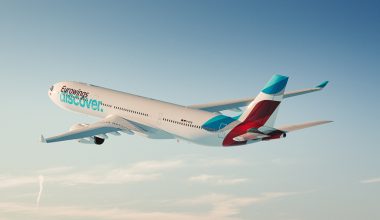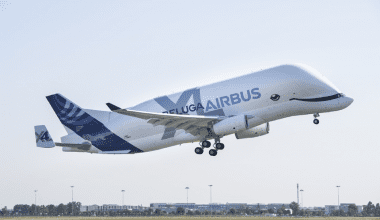The new low-cost carrier operating flights between Iceland and Europe plans to make its debut in the U.S. in 2022. The future business plan of Play Airlines will advance the flights to destinations on the U.S. East Coast from Iceland with an onward connection to Europe in the summer of next year.
Two months after the Play Airline’s launch in Europe in June 2021, the Icelandic carrier applied for authorization to fly to and fly from the U.S. region . The move to widen the airline’s reach to North America has been the initial business plan of Play Airlines. The low-cost carrier will attempt to run a successful business among the North American travelers, a market where its predecessor, Wow Air, failed.

Play Airlines plans for North America
Although the foreign air carrier permit and exemption authority doesn’t specify any routes of the application, the CEO of Play Airlines, Birgir Jonsson, has made it quite clear about the business plan of Play Airlines in the American market. The Icelandic carrier intends to operate in destinations like Boston, New York, and Washington at the initial phase with the possible fourth destination, Toronto; we could see the expansion in the service network depending on its success in the coming days. Jonsson, who was also the Deputy CEO of Wow Air, saw the airlines fly 17 destinations across the U.S. and Canada, including popular destinations like Cincinnati, Pittsburgh, and St Louis, during Wow Air’s high point. Even there has been no indication that the successor of Wow Air would be following a similar network to its predecessor, Mr. Jansson has hinted that some surprises may be hidden among the route network plans.
The Icelandic carrier began its flights to the European region in June 2021 with seven routes between Reykjavik and Europe, which was later increased to nine routes by August. Plan’s destinations include popular vacation spots like the Canary Islands of Gran Canaria and Tenerife. Play Airlines has a small-sized limited market in Iceland. Its strategy to cover the North American market will generate a high volume of air travel demand over its Reykjavik hub to make the carrier’s ultra-low-cost business model work. The business plan of Play Airlines is dependent on its operations, mostly with full flights where more than 90% of seats are occupied. The low-cost carrier’s full seat coverage plan has not been advancing quite smoothly so far; in its first full month of service in July, Play Airlines carrier 9,9899 passengers that just filled 42% of seats in operations, the airline expected to fill the seat up to 72% by the end of 2021 considering the difficult travel circumstances created by the outbreak of covid-19.

Play’s 192-seat Airbus A321 Neo aircraft in its fleet are expected to be the major players in the airlines’ route expansion business plan. The North American network expansion plan of the low-cost carrier will allow the narrow-bodied Airbus aircraft to fly up to four segments in a day, increasing the efficiency of the airline’s fleet and providing broader connectivity options for the clients. If the ‘expedited processing’ business plan of Play Airlines succeeds, the airline will likely compete with the Icelander, the flag carrier of Iceland, on at least some of the routes. The national flag carrier served up to 10 destinations across the North American network during the summer of 2021.
Besides the competition with the in-country carrier, Play Airlines will also face fierce competition from the other big fishes in the industry. Many of the big transatlantic airlines, including American Airlines, United Airlines, Air France, Lufthansa, are planning robust schedules in the upcoming year where the travel rate is estimated to bounce back after going through two years of the dry season. JetBlue has already debuted its long-awaited flight routes in London in August 2021. Also, Lufthansa’s new long-haul subsidiary, low-cost carrier Eurowings Discover, and Norwegian Air’s reboot Norse Atlantic Airways bot are planning their debuts in the U.S. market next year.
Nonetheless, Play is quite confident in its business prospects; during the investor presentation in June 2021, the low-cost carrier outlined its ambitious business growth plan, which forecasted only one year of loss in 2021. The Icelandic carrier anticipates that it will make at least $4 million profit in 2022 when air travel demand will slowly return to its previous glory and secure roughly $43 million profit by the middle of the decade.








